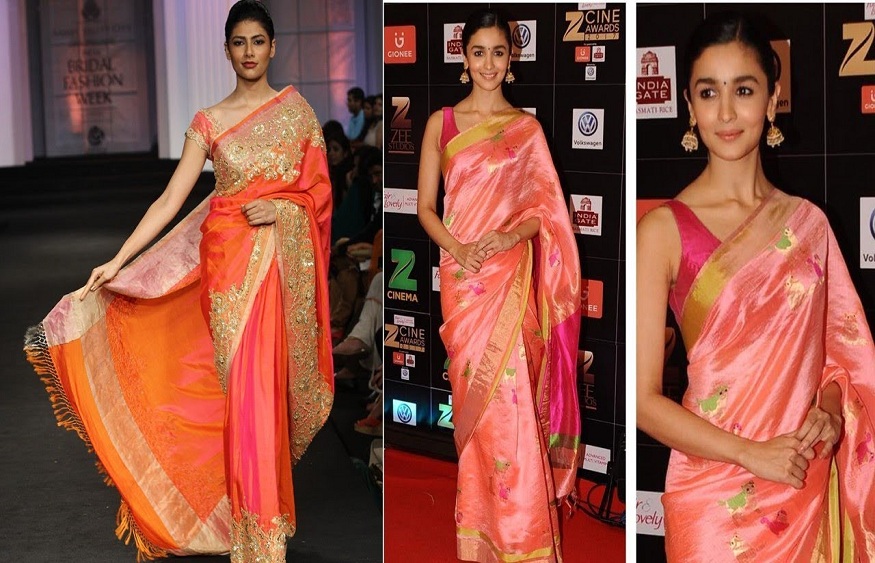Every woman is proud to own a saree. The saree is more than just a piece of cloth. The saree is a textile that every woman holds dear, and that brings back fond memories. When you wear and accessorize yourself in sarees, you develop a strong sense of age-old connection with your grandmother, mother, aunt, and every other woman who knows and represents the spirit of tradition—simplicity, faith, and elegance!
A saree is essentially a drape. A lengthy, ornamental, unstitched drape Indian designer dress that offers a ton of potential to work with. It works regardless of how one drapes it. Moreover, this offers designers a lot of creative flexibility. The same item of clothing can give the wearer various looks. These are the reasons the saree has been there for centuries. Its ways and fashions have changed and evolved to fit current styles, and they still do, without altering the saree’s essential elegance and feminine delicacy.
Here is a list of some sarees you should have to make this traditional dress easier for you.
The traditional zari saree
The weaving of a saree is an improvised and artistic process that requires a delicate process of silver bits being shaped into very fine yarn through various phases. This sari’s weaving involves a lot of hand labor, takes a long time, calls for continual attention and control, and calls for expertise that can only be attained after years of practice. The best materials for Banarasizari weaving are silk thread or fine, premium cotton yarn. Pure silk by silk, satin by silk, satin by silk, and muslin or cotton by silk are among the fabrics that can be created.
These are wedding sarees that every bride usually wears.
The elegant anchor Banarsi saree
Tanchoi brocade is a stunning piece of art due to its light, silky, luxurious weaving and heavily engraved motifs. TanchoiBanarasi Sarees are woven using intricate and technical methods using one or two warps and two to five weft colors. These Banarsi sarees are incredibly soft and light party-wear sarees. Most of the intricate designs on these beautiful sarees feature flying bird motifs, such as pairs of cocks sitting amidst floral sprays, which are worked all over the body and surrounded by lovely flowers. The pallu is sometimes done more boldly with peacocks, baskets or clusters of flowers, or scenes of hunting.
The traditional jamdani saree
The silk Jamdani saree is a creative version of brocade or the figured muslin fabric. It is one of the finest items provided by the talented artisans of traditional Banarasi handlooms. Jamdani is a Banarasi silk fabric brocaded with cotton and zari threads. The pattern thread is fixed between several different warp threads that vary according to the size of the design, and the shuttle is then thrown to pass the ordinary weft. The Jamdani weaver creates a collection of sophisticated patterns by repeating this method, where the cut thread’s size and placement are per the pattern’s character.
The comfortable cotton saree
Cotton absorbs sweat and insulates against heat and cold, making it the ideal fabric for every occasion and climate. Cotton sarees are soft, light, and airy. These are always fashionable and in style, as they are made of comfortable, easy-to-wash, and weather-resistant fabrics. They are the perfect weight for cool summers, elegant in the winter, and airy in the spring. Every wardrobe needs at least one saree that is made of Katan silk. Every wardrobe should have at least one light shade of pink, yellow, green, and a blue saree.
Conclusion
The sari, an ethnic traditional dress worn in most of India, is the center of today’s silk weaving culture. For special occasions, Indian women dress in ornate, vibrant silk sarees. Indian designer dresses like sarees are attractive and unavoidable for Indian ladies due to their vivid colors, lightweight, and superb draping qualities. With its wide range of designs, weaves, and patterns, Indian sarees are well-known worldwide.

